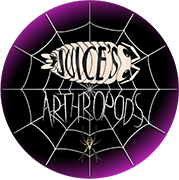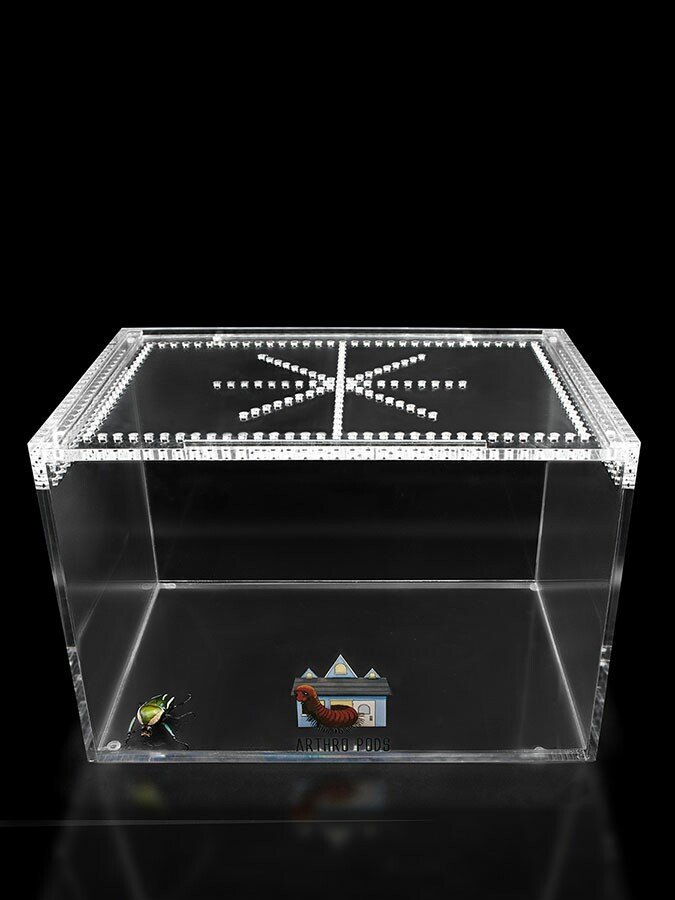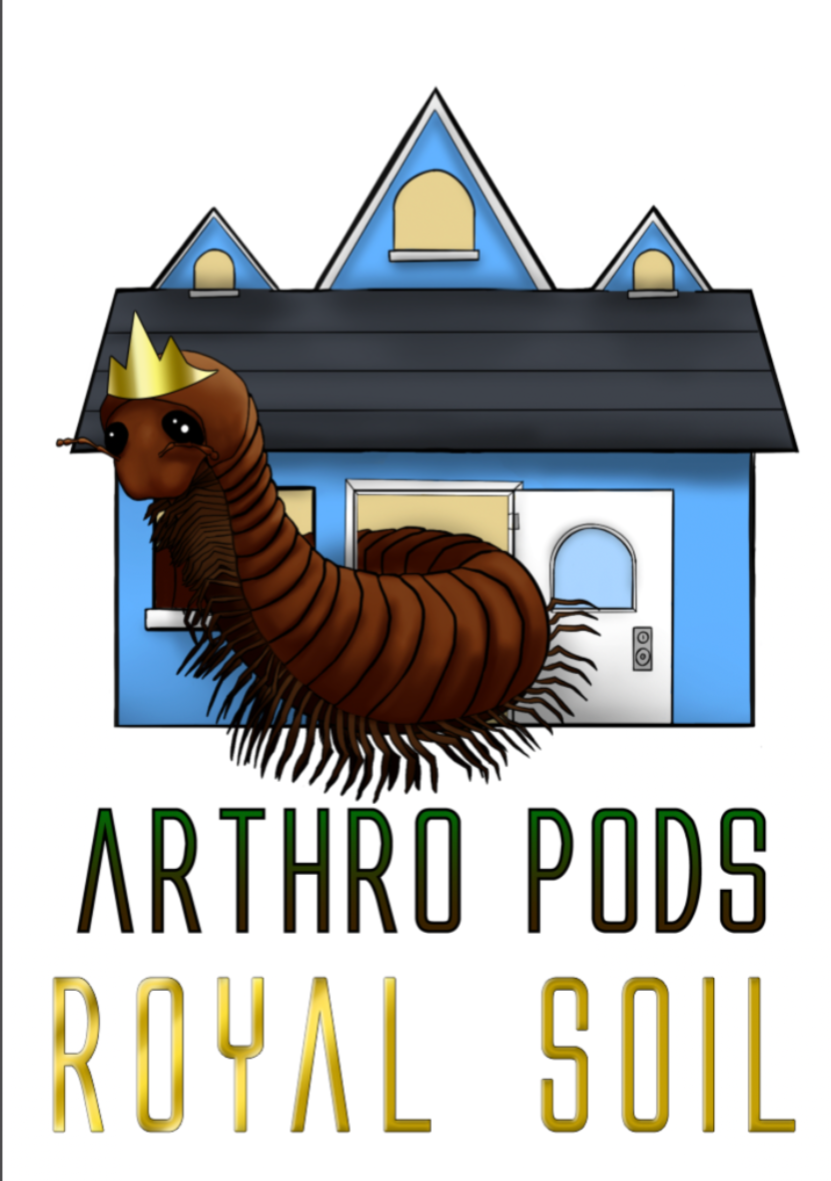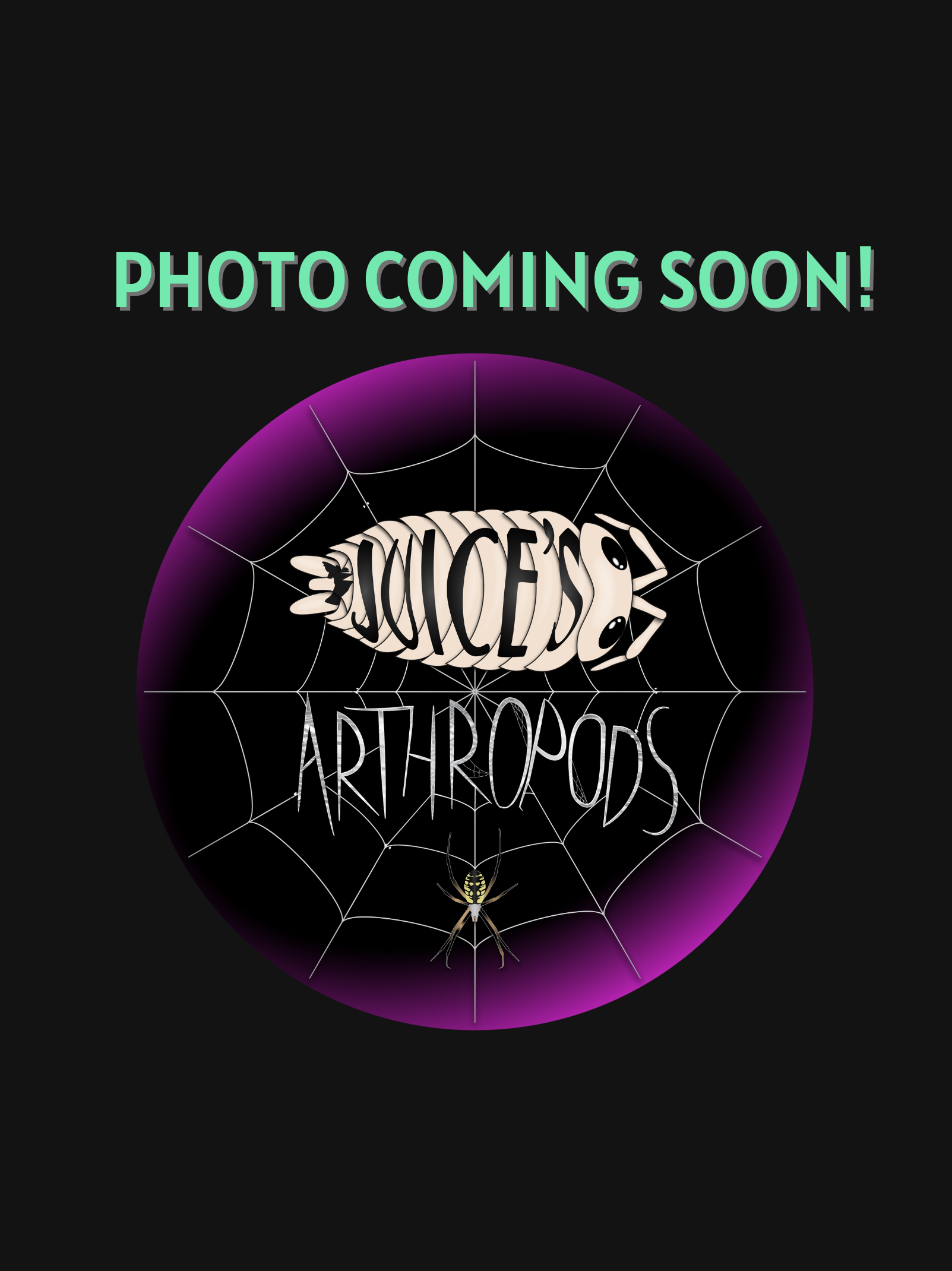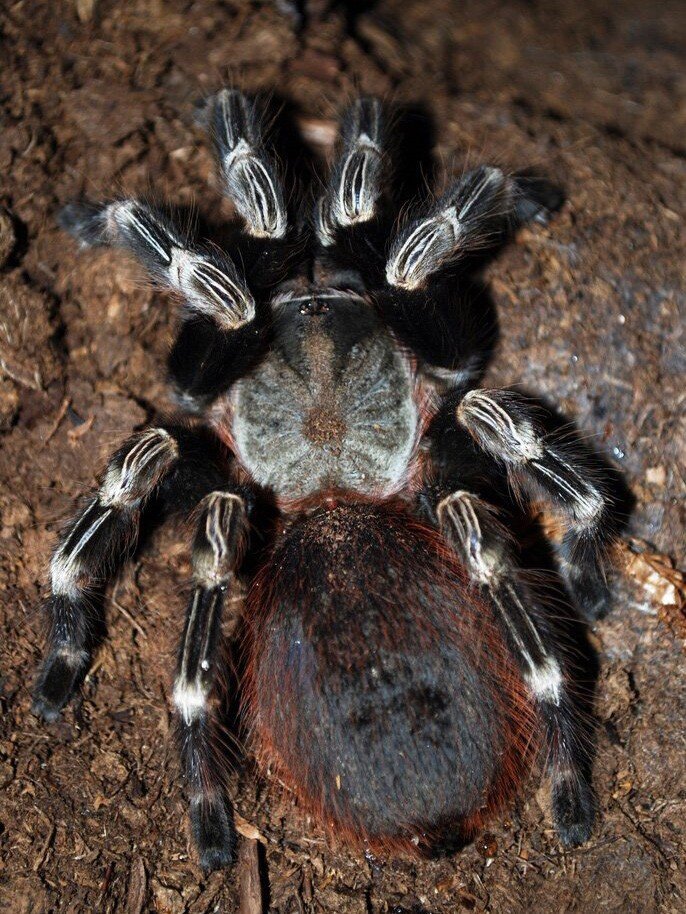 Image 1 of 2
Image 1 of 2

 Image 2 of 2
Image 2 of 2



Vitalius chromatus
The Vitalius chromatus (formerly known as the Nhandu chromatus) or Brazilian Red and White Tarantula, is very sizable (upwards of 7 inches). This tarantula is incredible! As the name implies. It is red and white against the jet black. Making this species look stunning. This eager eater has been known to take down birds in the wild (though they aren’t known for eating birds), making for a genuinely incredible feeding time experience! The only real issue with this tarantula is that it is rather skittish and will gladly load you up like a pin cushion with urticating hairs, so handling is not advised by anybody who doesn’t want to itch for days.
The Vitalius chromatus (formerly known as the Nhandu chromatus) or Brazilian Red and White Tarantula, is very sizable (upwards of 7 inches). This tarantula is incredible! As the name implies. It is red and white against the jet black. Making this species look stunning. This eager eater has been known to take down birds in the wild (though they aren’t known for eating birds), making for a genuinely incredible feeding time experience! The only real issue with this tarantula is that it is rather skittish and will gladly load you up like a pin cushion with urticating hairs, so handling is not advised by anybody who doesn’t want to itch for days.
The Vitalius chromatus (formerly known as the Nhandu chromatus) or Brazilian Red and White Tarantula, is very sizable (upwards of 7 inches). This tarantula is incredible! As the name implies. It is red and white against the jet black. Making this species look stunning. This eager eater has been known to take down birds in the wild (though they aren’t known for eating birds), making for a genuinely incredible feeding time experience! The only real issue with this tarantula is that it is rather skittish and will gladly load you up like a pin cushion with urticating hairs, so handling is not advised by anybody who doesn’t want to itch for days.
What's the ideal diet for a Brazilian Red and White Tarantula?
All Tarantulas can eat a variety of feeders. Stick to crickets, dubia roaches, silkworms, horned worms occasionally, and a superworm or mealworm as the occasional treat!
How should I keep a Brazilian Red and White Tarantula?
For this particular creature, you can start with a small Terrestrial Terrain enclosure if under a ¼” - 1.2” spiderling (sling), and when they get to be about 1” in size, you will want to upgrade to the medium or large Terrestrial Terrain enclosure. Feed them as slings once a week, twice if their opisthosoma (abdomen) looks small, but if the opisthosoma is wider than their prosoma (pneumothorax), then wait a couple of days to feed. For juveniles or adults, stick to feeding once a week, nothing larger than their opisthosoma. Make sure to keep a full water dish at all times; wider and deeper is fine. Your tarantula can’t drown; they float on water.
How long could a Brazilian Red and White Tarantula live?
Females are believed to live roughly 15+ years, with males reaching up to 4 years on average. All estimates are based on multiple sources.
Some photos provided by iNaturalist and Wikipedia
Igor Balashov, some rights reserved (CC BY)
Flamesbane, some rights reserved (CC BY 3.0)
